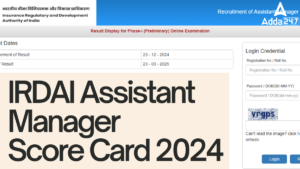Directions (1-5): Study the information carefully and answer the questions given below.
A certain number of persons are sitting in a row facing north. The number of persons sitting between A and G is same as between G and D. A and D are left to B and not less than four persons sit between them. Eight persons are sitting to the left of B.H is immediate left to G. Two persons sit between E and C, who is 3rd right to F. Only one person sits between B and F. Not more than ten sit between D and the one who is immediate right to E.
Q1. How many persons are sitting in the row?
The number of persons sitting between A and G is same as between G and D. A and D are left to B and not less than four persons sit between them. Case2 gets eliminated. H is immediate left to G.
Not more than ten sit between D and the one who is immediate right to E. The final arrangement is:
Q2. How many persons are sitting between A and B?
Eight persons are sitting to the left of B. Two persons sit between E and C, who is 3rd right to F. Only one person sits between B and F. There will be two cases ; case 1 F is right to B and case2 F is left to B.
The number of persons sitting between A and G is same as between G and D. A and D are left to B and not less than four persons sit between them. Case2 gets eliminated. H is immediate left to G.
Not more than ten sit between D and the one who is immediate right to E. The final arrangement is:
Q3. If X sits exactly between H and D, then who among the following sits 4th right to X?
Eight persons are sitting to the left of B. Two persons sit between E and C, who is 3rd right to F. Only one person sits between B and F. There will be two cases ; case 1 F is right to B and case2 F is left to B.
The number of persons sitting between A and G is same as between G and D. A and D are left to B and not less than four persons sit between them. Case2 gets eliminated. H is immediate left to G.
Not more than ten sit between D and the one who is immediate right to E. The final arrangement is:
Q4. What is the position of C w.r.t D?
Eight persons are sitting to the left of B. Two persons sit between E and C, who is 3rd right to F. Only one person sits between B and F. There will be two cases ; case 1 F is right to B and case2 F is left to B.
The number of persons sitting between A and G is same as between G and D. A and D are left to B and not less than four persons sit between them. Case2 gets eliminated. H is immediate left to G.
Not more than ten sit between D and the one who is immediate right to E. The final arrangement is:
Q5. If Z is 5th left to G, then how many persons are sitting between A and Z?
Eight persons are sitting to the left of B. Two persons sit between E and C, who is 3rd right to F. Only one person sits between B and F. There will be two cases ; case 1 F is right to B and case2 F is left to B.
The number of persons sitting between A and G is same as between G and D. A and D are left to B and not less than four persons sit between them. Case2 gets eliminated. H is immediate left to G.
Not more than ten sit between D and the one who is immediate right to E. The final arrangement is:
Directions (6-7): Read the following information carefully and answer the given questions.
If ‘P × Q’ means P is sister of Q.
If ‘P – Q’ means P is son of Q.
If ‘P ÷ Q’ means P is daughter of Q.
If ‘P + Q’ means P is husband of Q.
Q6. In the given expression M÷R+S×U-W, how is R related to W?
Q7. Which of the following expression means ‘F is aunt of A’?
Directions (8-12): Study the information carefully and answer the questions given below.
Eight persons are sitting in two parallel rows as per the following arrangement.
The persons are at different designations in a company i.e. GM, DGM, AGM, CM, SM, manager, officer, clerk. The designation mentioned are in decreasing order of seniority. The persons who are immediate senior or immediate junior do not sit in same row or face each other.
The senior most person faces the 3rd most junior person. The 2nd most junior faces the 4th most senior person. Only one person sits between the one who is CM and the one who is DGM. The junior most person neither faces south nor sits at any end. The ones sitting at right ends are at immediate designation to each other. The one who is officer is 3rd from the left end.
Q8. What is the designation of the one who is immediate right to the clerk?
The ones sitting at right ends are at immediate designation to each other. So, there will be one more case in both the cases i.e. in one AGM sitting in the right most end and other in which GM sitting in right most end. The senior most person faces the 3rd most junior person.
The persons who are immediate senior or immediate junior do not sit in same row or face each other.
The junior most person neither faces south nor sits at any end. So, case2(a) case2(b) and case1(b) gets eliminated.
Q9. What is the designation of the one who sits at the left end in row 1?
The 2nd most junior faces the 4th most senior person. The one who is officer is 3rd from the left end. Only one person sits between the one who is CM and the one who is DGM.
The ones sitting at right ends are at immediate designation to each other. So, there will be one more case in both the cases i.e. in one AGM sitting in the right most end and other in which GM sitting in right most end. The senior most person faces the 3rd most junior person.
The persons who are immediate senior or immediate junior do not sit in same row or face each other.
The junior most person neither faces south nor sits at any end. So, case2(a) case2(b) and case1(b) gets eliminated.
Q10. How many persons are sitting between the SM and officer?
The 2nd most junior faces the 4th most senior person. The one who is officer is 3rd from the left end. Only one person sits between the one who is CM and the one who is DGM.
The ones sitting at right ends are at immediate designation to each other. So, there will be one more case in both the cases i.e. in one AGM sitting in the right most end and other in which GM sitting in right most end. The senior most person faces the 3rd most junior person.
The persons who are immediate senior or immediate junior do not sit in same row or face each other.
The junior most person neither faces south nor sits at any end. So, case2(a) case2(b) and case1(b) gets eliminated.
Q11. Four of the following belongs to a group find the one that does not belong to that group?
The 2nd most junior faces the 4th most senior person. The one who is officer is 3rd from the left end. Only one person sits between the one who is CM and the one who is DGM.
The ones sitting at right ends are at immediate designation to each other. So, there will be one more case in both the cases i.e. in one AGM sitting in the right most end and other in which GM sitting in right most end. The senior most person faces the 3rd most junior person.
The persons who are immediate senior or immediate junior do not sit in same row or face each other.
The junior most person neither faces south nor sits at any end. So, case2(a) case2(b) and case1(b) gets eliminated.
Q12. Who among the following faces the one who is SM?
The 2nd most junior faces the 4th most senior person. The one who is officer is 3rd from the left end. Only one person sits between the one who is CM and the one who is DGM.
The ones sitting at right ends are at immediate designation to each other. So, there will be one more case in both the cases i.e. in one AGM sitting in the right most end and other in which GM sitting in right most end. The senior most person faces the 3rd most junior person.
The persons who are immediate senior or immediate junior do not sit in same row or face each other.
The junior most person neither faces south nor sits at any end. So, case2(a) case2(b) and case1(b) gets eliminated.
Directions (13-15): Study the following information to answer the given questions:
If A>B means A is not greater than B
A=B means A is not greater than or equal to B
A≤B means A is not smaller than B
A≥B means A is not smaller than or equal to B
Q13. Statements: A = L < T ≥ R >H ≥ K
Conclusions: I. H ≥ L II. K ≥ T
(I) H ≥ R < T = L [False] (II) T > R ≤ H > K [False]
Q14. Statements: P ≤ N ≥ D ≤ G = B > J
Conclusions: I. G = P II. G = J
Q15. Statement: Q > E = I ≥ N < R ≤ S
Conclusions: I. E ≤ S II. S > N
(I) E < I > N = R ≥ S [False] (II)N = R ≥ S [True]






 The Hindu Review October 2022: Download ...
The Hindu Review October 2022: Download ...
 IRDAI Assistant Manager Score Card 2024 ...
IRDAI Assistant Manager Score Card 2024 ...
 IRDAI Assistant Manager Prelims Cut Off ...
IRDAI Assistant Manager Prelims Cut Off ...




